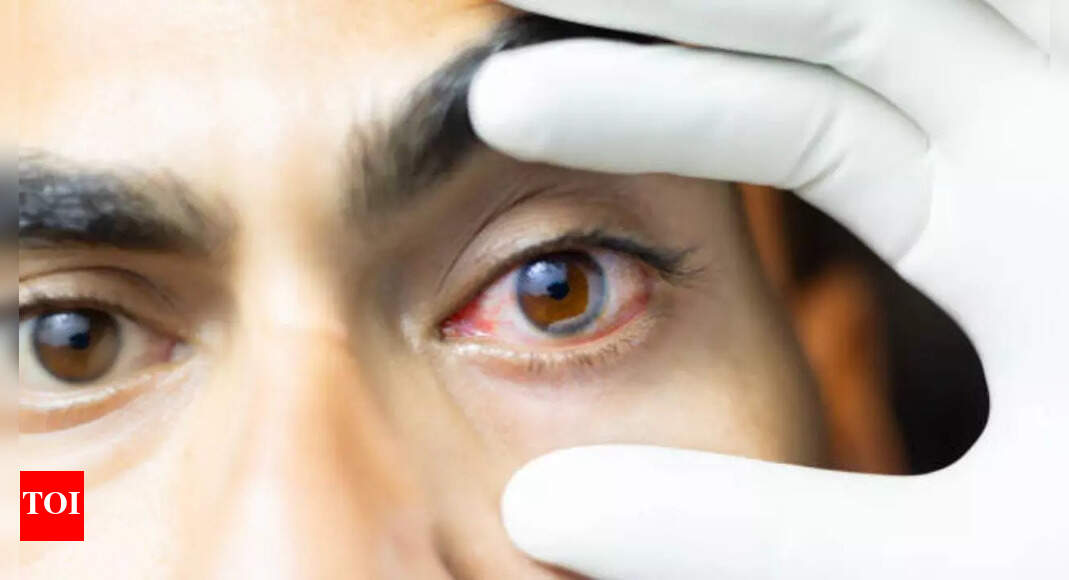Summary
Image credits: Getty Images
5 Easy lifestyle changes to improve eyesight
What is Valsalva Retinopathy?
Image credits: Getty Images
What causes Valsalva Retinopathy?
What happened to the man?
Image credits: Getty Images
If you think gymming and strength training mishaps are limited to th…
Source: The Times of India

AI News Q&A (Free Content)
Q1: What is Valsalva Retinopathy and how does it occur?
A1: Valsalva Retinopathy is a condition characterized by retinal bleeding resulting from the rupture of retinal vessels. This rupture is often caused by a sudden increase in intrathoracic or intra-abdominal pressure, which can occur during intense physical activities such as weightlifting. This pressure increase leads to a forceful exhalation against a closed airway, known as the Valsalva maneuver, which in turn causes the blood vessels in the retina to burst, leading to potential vision impairment.
Q2: What are the general symptoms and treatment options for Valsalva Retinopathy?
A2: Symptoms of Valsalva Retinopathy usually include sudden vision loss or visual disturbances due to retinal hemorrhage. The condition is often self-limiting, with the bleeding clearing up over time without intervention. However, if the hemorrhage does not resolve or causes significant vision impairment, treatments such as Nd:YAG laser membranotomy may be employed to remove the blood from the retina and restore vision.
Q3: How did the man experience sudden vision loss at the gym due to Valsalva Retinopathy?
A3: The man suffered sudden vision loss at the gym after performing intense weightlifting exercises. The physical exertion likely led to a Valsalva maneuver, unintentionally increasing the pressure in his chest and abdomen, which caused the retinal vessels in his eyes to rupture. As a result, he experienced Valsalva Retinopathy, leading to his sudden vision loss.
Q4: What is the Valsalva maneuver, and how does it relate to Valsalva Retinopathy?
A4: The Valsalva maneuver is a technique involving a forceful exhalation against a closed airway, typically by closing one's mouth and pinching the nose while trying to breathe out. This action increases intrathoracic pressure, affecting cardiovascular function and potentially leading to the rupture of retinal vessels if excessive. It is this mechanism that connects the Valsalva maneuver with the occurrence of Valsalva Retinopathy.
Q5: What are the potential risks of performing high-intensity exercises related to eye health?
A5: High-intensity exercises, particularly those involving heavy lifting, can pose risks to eye health by potentially causing conditions like Valsalva Retinopathy. The strain from such activities can lead to increased intrathoracic pressure, which might result in the rupture of retinal vessels and subsequent vision problems. It is important for individuals engaging in these exercises to be aware of the risks and to take preventive measures, such as avoiding breath-holding during exertion.
Q6: What does recent research suggest about the treatment and outcomes for Valsalva Retinopathy?
A6: Recent studies indicate that while Valsalva Retinopathy is often self-resolving, certain cases may require medical intervention. The use of Nd:YAG laser membranotomy has been shown to be effective in clearing macular preretinal hemorrhage caused by this condition, significantly improving visual outcomes for patients. This treatment is generally considered when spontaneous resolution does not occur or when rapid restoration of vision is necessary.
Q7: How does the Choroidal Vascularity Index relate to conditions like Valsalva Retinopathy?
A7: The Choroidal Vascularity Index (CVI) is a biomarker that helps assess vascular changes in the eye. Research shows that CVI can vary significantly in different physiological and pathological states, including those involving increased intrathoracic pressure, like during the Valsalva maneuver. Monitoring CVI may provide insights into the vascular health of the retina and help in understanding the mechanisms of conditions such as Valsalva Retinopathy.
References:
- Valsalva retinopathy
- Valsalva maneuver
- Retinopathy
- Choroidal vascularity index as a marker of health and disease: systematic review and meta-analyses.





